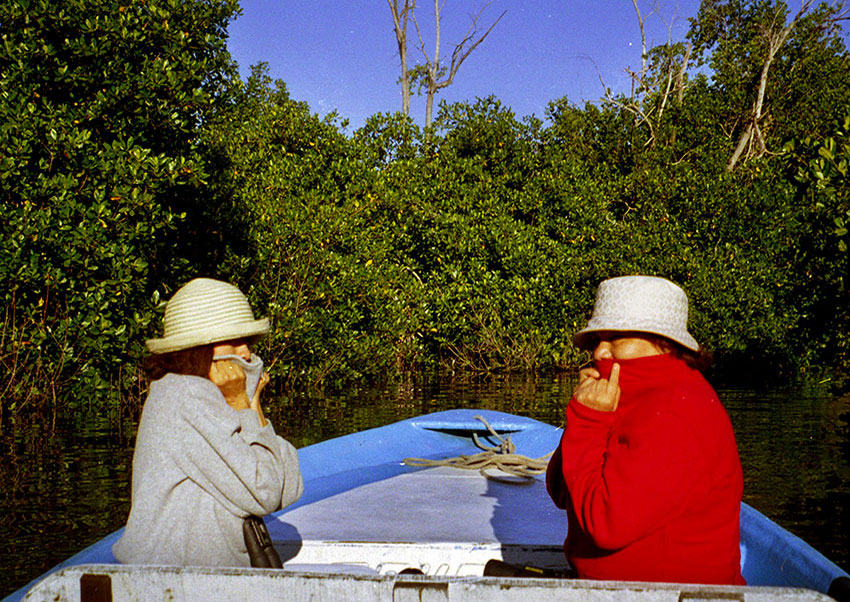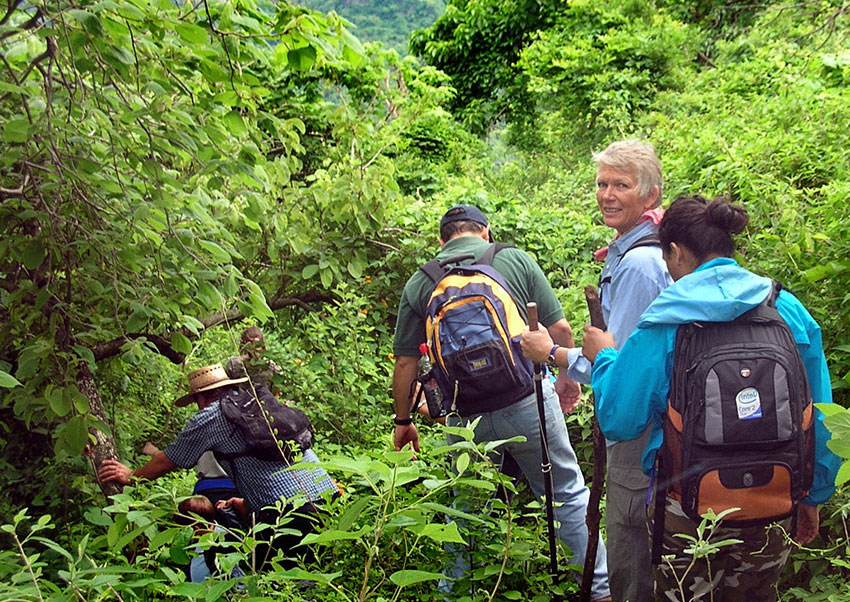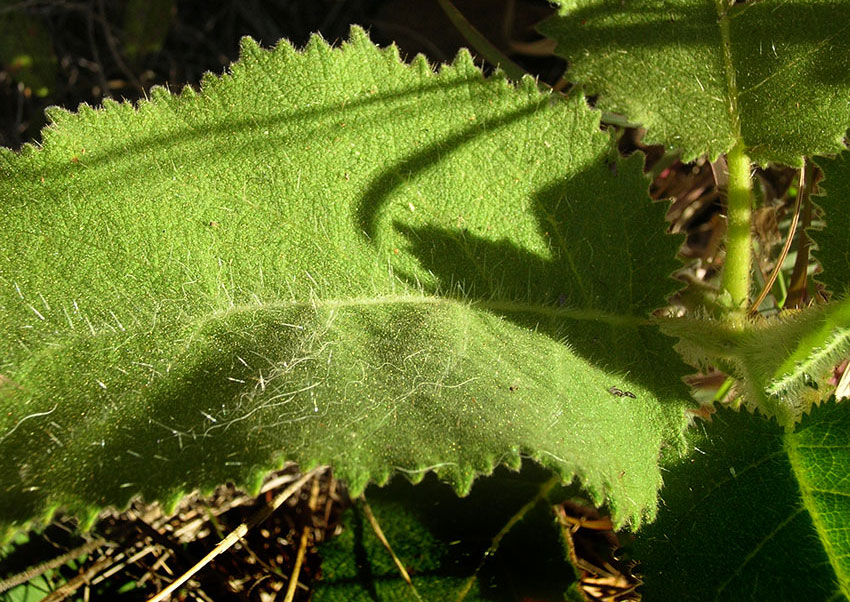In many parts of Mexico, the rainy season reaches its peak in August, creating a rich, verdant landscape. Exuberant foliage spreads over the hills and valleys, while wildflowers and mushrooms sprout underfoot.
It’s the perfect time to go hiking in the great outdoors. But beware! August may also bring irritating bugs like moscos (mosquitoes), jejenes (gnats) and ácaros (mites). These little creatures could transform your idyllic walk into pure misery but you can greatly reduce the chances of that happening by taking a few simple precautions.
First, wear long sleeves and long pants even though it’s summer. This simple ploy will not only reduce the impact of the bugs just mentioned but will also help protect your arms and legs from thorns or irritating plants like cacti, uña de gato (cat’s claw) and mala mujer (nettles).
Just before hiking, apply bug repellent to your shoes, socks, calves, waist, neck and ears, but never to your forehead where sweat will carry it right into your eyes. The ecologically-sound repellents I’ve tried don’t last long, so I reluctantly recommend Off or something else containing DEET.
Just as soon as possible after the hike, take a shower and vigorously scrub yourself — twice! Then throw all your hiking clothes into the wash.

These procedures will greatly reduce your chances of finding yourself covered with itchy red spots — caused by chiggers — a day or two after your hike. Note the words of biologist Nina Bicknese: “There is no creature alive that can cause more torment for its size than the chigger.”
This nearly invisible creature is the trombiculid mite, known in Mexico as ácaro de la cosecha, ácaro rojo, tlazahuate, nigua or güina, and it could easily continue to plague you for weeks if you give in to temptation and scratch it.
During your hike, a nearly microscopic attack force of chiggers probably dropped on to your shoes from the tips of overhanging plants. Sitting on the ground is another way to pick them up. I know one experienced hiker who carries a super-light folding chair in her backpack. That chair is the only thing upon which she will place her posterior when hiking or camping.
The mites that boarded your body did not, by the way, consist of seasoned fighters, but, quite literally, “babes in the woods.” They are larvae that, once grown, turn into vegetarians representing no danger to human beings.
Bicknese says:
“A chigger usually goes unnoticed for one to three hours after it starts feeding . . . quietly inject(ing) its digestive saliva. After a few hours your skin reacts by hardening the cells on all sides of the saliva path, eventually forming a hard, tube-like structure called a stylostome. The stylostome . . . (that) functions like a feeding tube for the hungry chigger that sits with its mouthparts attached . . . and, like a person drinking a milk shake through a straw, sucks up your liquefied tissue.”

You won’t feel anything during this gruesome-sounding process because the little chigger cleverly administers an anesthetic right from the start. Only when your body reacts to the presence of the stylostome do you feel the urge to scratch.
Don’t do it! Scratching will almost certainly lead to infection and to several extra weeks of misery. One good thing about chiggers is that, unlike certain other kinds of mites, they don’t carry diseases of any kind.
Although they are so small, chiggers run very fast on long legs and take only about 15 minutes to climb from your shoes to your belt line — a distance equivalent to a human’s climb to the top of a tall mountain. At the belt line they may encounter a tight elastic band, so that’s where they often stop and start eating. The waist and the softer parts of the body is where you’ll usually find the red welts.
If, unfortunately, you forgot your repellent and now find yourself covered with itchy red splotches:
- Don’t scratch them, not even a little bit.
- Apply Calamine lotion — Caladryl is a popular brand name in Mexico — liberally and renew it as often as possible. To be sure you don’t scratch while sleeping, you may want to apply Andantol to stop the itching. After a week, you should be fine.
A less common, but equally itchy problem, is infestation with scabies mites, sometimes called aradores (plowers). These are females that tunnel under your skin, laying eggs as they go. The results are small red bumps or mini-blisters in a straight or S-shaped line. They itch like crazy.

These mites won’t wash off in the shower like chiggers, but they can be killed overnight with a potent cream called Scabisan, easily found in Mexico.
Next on our list are jejénes, a word that covers biting midges, sand flies or no-see-ums. They are, without a doubt, the most unforgettable bloodsucking superstars of the famed port of San Blás in Nayarit.
Elsewhere, they tend to cause problems principally during the rainy season. If you want to live with them, you need to lather DEET-based repellent onto every exposed skin surface except your eyes and forehead. That may hold you for a few hours. Be prepared to repeat the slathering twice more in the course of a day.
That should do the trick, but you may still find yourself performing what Douglas Brown calls “The San Blás Salute,” waving a handkerchief in front of your eyes whenever you’re trying to talk to someone.
Another bloodsucker is triatoma, the Mexican bed bug or kissing bug (chinche hocicona). They like to sneak up while you’re sleeping under the stars and insert a needle in your neck or lip. Because they sometimes transmit Chagas Disease (which killed Darwin), I suggest you sleep in a tent.
As for scorpions, arachnid expert Rodrigo Orozco says Mexico is the world champion, with 120 species. The most dangerous are the Centruroides, typically found on the Pacific coast. They are also known as bark scorpions in North America. If you get stung, head for a hospital and try to bring along the creature that stung you.
[soliloquy id="86948"]
If you discover ticks on your body, use alcohol to clean the area around the tick and tweezers to grab it as close as possible to the head. Pull it out and clean the bite area again with alcohol or soap and water.
Finally, let me mention Africanized bees, about which there is much to say — and I have said it in How to Survive a Bee Attack.
But all these dire warnings should not put you off. It’s likely you will not encounter even one of these pests on your next hike. But if you do — and you are wearing long sleeves, long pants and a splash of repellent — you should still be smiling on the following day.
Happy hiking!
The writer has lived near Guadalajara, Jalisco, for more than 30 years and is the author of A Guide to West Mexico’s Guachimontones and Surrounding Area and co-author of Outdoors in Western Mexico. More of his writing can be found on his website.
